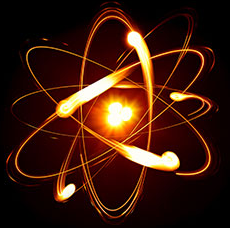EE1P11 Classical and Quantum Mechanics
In the first part of this course the theory of classical mechanics is constructed based on observable phenomena, most of which will be demonstrated experimentally. It will be shown that motion (velocity, acceleration) is caused by forces that can be described by vectors in three dimensions. When forces act on particles or objects, they cause translation, rotation or wave motion. It will be shown that forces can also be used to introduce concepts like “work” and “energy”. These concepts can in turn be used fruitfully to describe complex motion caused by time- and position-dependent forces, by applying laws of conservation of kinetic or potential energy.
In the second part of this course the non-intuitive physics ruling the behavior of matter and its interaction with radiation at atomic scale, i.e. quantum mechanics, will be introduced. It will be shown that particles have wave-like behavior and vice versa, and that on atomic scale the energy of particles varies in discrete steps rather than continuously as is the case in classical mechanics. Heisenberg’s uncertainty principle will also be discussed. In this part atudents will learn to carry out calculations on standard quantum mechanical examples like the particle-in-a-box using the Schroedinger equation. Finally the conduction of current in metals and semiconductors will be described, as well as a qualitative description of the working principle of the diode, the transistor and the solar cell.
Teachers
dr. Ilke Ercan
Nanocomputing, Emerging Electronics, Fundamental Energy Limits, Physical Information Theory
prof.dr.ir. Leon Abelmann (BE)
Magnetism, Nanotechnology, MEMS
dr. Massimo Mastrangeli (ECTM)
Organ-on-chip technology, micro/nanosystems assembly, capillary manipulation, solid-liquid interfaces
dr. Filipe Arroyo Cardoso (EI)
Sensors & actuators physics, micro- & nano-fabrication, material science, CMOS monolithic integration of different technologies. Main applications: biosensors for Lab-on-a-Chip, implantable, wearable devices.
Last modified: 2024-09-04
